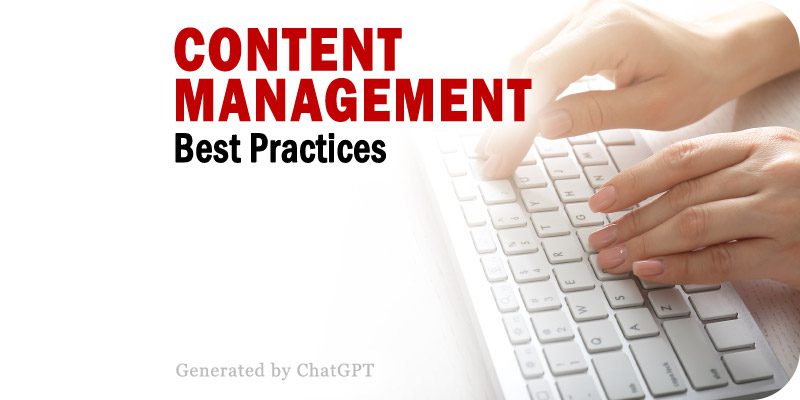10 Content Management Best Practices Generated by ChatGPT


Solutions Review’s WorkTech editor, William Jepma, asked ChatGPT for content management best practices. After reviewing its answers for clarity and editing them for grammar, we compiled them below. The questions we asked the AI will be highlighted in red like this.
What is Content Management?
Content management refers to the processes and technologies used to manage digital content throughout its lifecycle, from creation to publication, revision, archiving, and eventual deletion. A content management system (CMS) provides tools and interfaces to help manage and organize digital content, typically for websites and other digital assets such as documents, images, videos, and audio files. Content management can include tasks such as authoring, review, approval, publishing, and reporting, as well as the technical aspects of storing, organizing, retrieving, and delivering content to users. Content management aims to ensure that digital content is accurate, up-to-date, and accessible to the right people at the right time and on the right device.
What Are Some Content Management Best Practices?
Here are some best practices for effective content management:
1) Define a content strategy
Develop a clear understanding of the purpose of your content and who your target audience is. This will help guide your content creation, organization, and distribution.
2) Establish a governance structure
Establish clear roles and responsibilities for content creation, approval, and publishing. This helps ensure consistency and quality in your content.
What is a content governance structure?
A content governance structure is a set of policies, processes, and procedures that outline how content will be created, reviewed, approved, published, and maintained within an organization. The framework ensures that content is consistent, accurate, and aligned with the organization’s goals and values.
A well-designed content governance structure also helps organizations ensure that their content is of high quality, aligned with their goals and values, and meets the needs of their audience. It also helps streamline the content creation process and make it more efficient, making it easier for content creators to focus on creating high-quality content.
3) Use descriptive and meaningful metadata
Use descriptive tags, keywords, and other metadata to help categorize, organize, and search for content. This makes it easier for users to find the information they need.
4) Use version control
Keep track of changes to your content by maintaining different versions and allowing users to revert to previous versions if needed.
5) Implement a review and approval process
Set up a system to review and approve content before it is published to ensure accuracy, clarity, and appropriateness.
6) Make content accessible
Ensure that your content is accessible to users with disabilities and meets web accessibility standards.
7) Keep content up-to-date
Regularly review and update your content to ensure that it is accurate and relevant. This helps maintain the trust of your users.
8) Evaluate and optimize content performance
Analyze metrics such as page views, bounce rate, and time on page to determine your content’s performance and make necessary improvements.
How do you track content performance?
Tracking content performance involves measuring and analyzing metrics that provide insights into how your audience receives and uses your content. To follow content performance, you can use web analytics tools like Google Analytics to gather and analyze your website and content data. You can also use marketing analytics tools to track content performance across channels and devices.
By tracking content performance, you can gain insights into what works well and needs improvement and make informed decisions about optimizing your content for better results.
9) Integrate with other systems
Integrate your content management system with other systems, such as marketing automation, analytics, and customer relationship management, to maximize efficiency and effectiveness.
10) Continuously evaluate and improve
Regularly evaluate and refine your content management processes and technology to ensure that they meet your needs and deliver value to your organization.




















